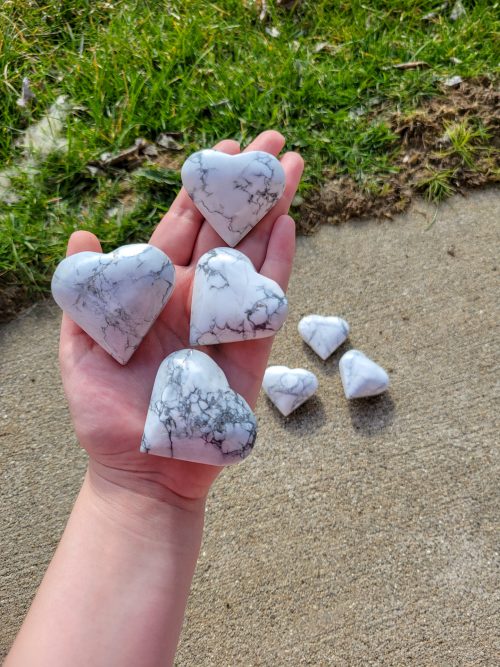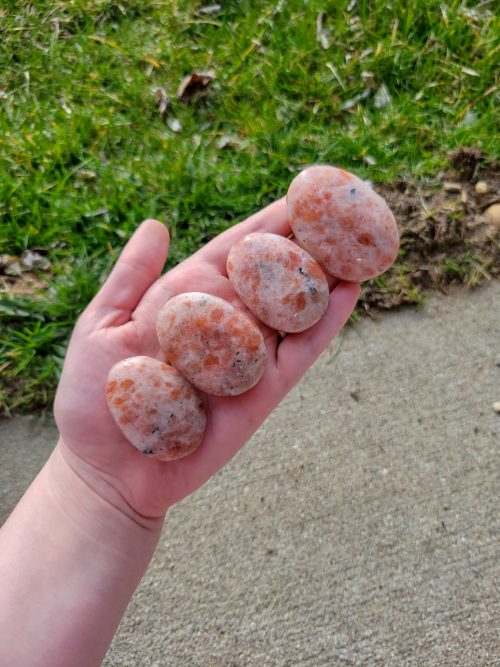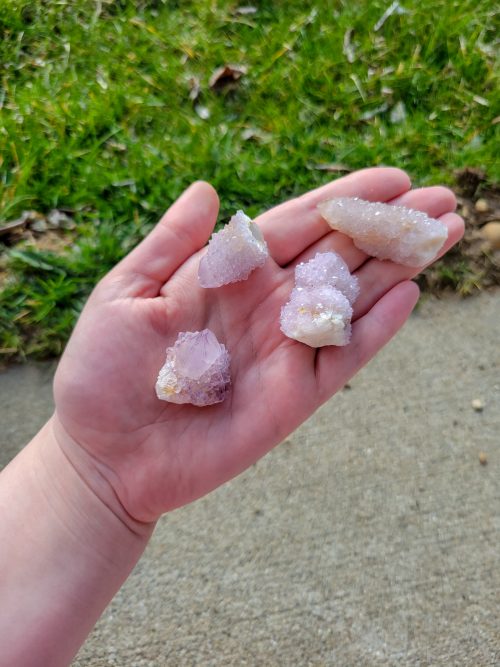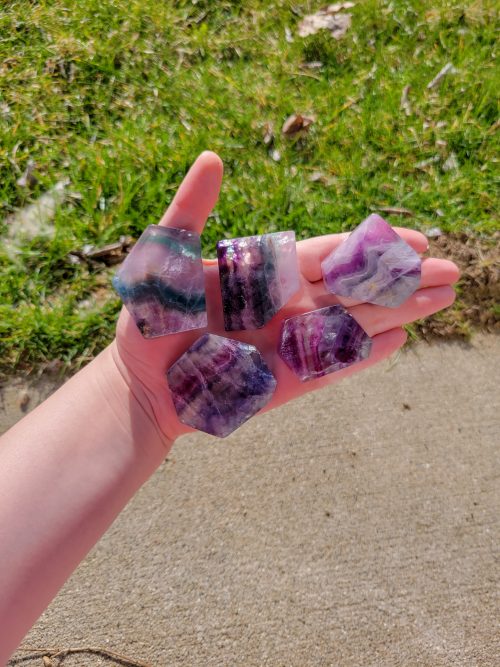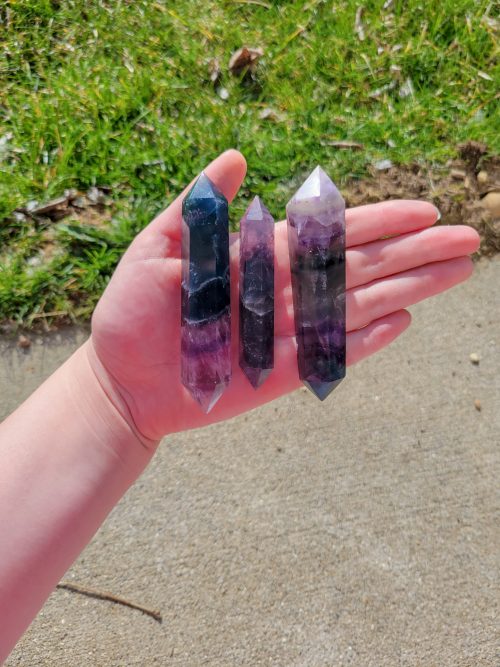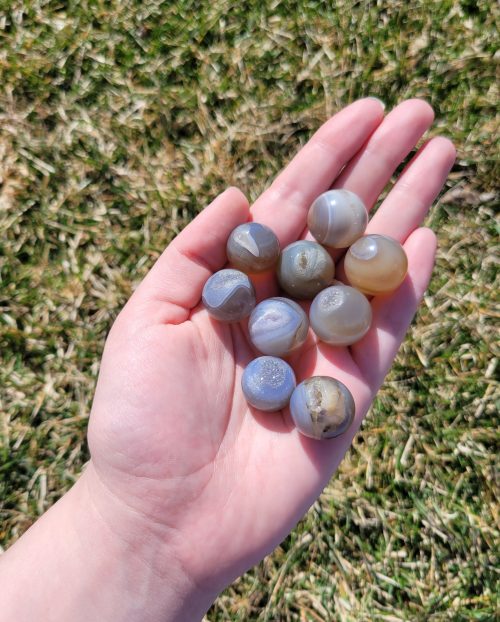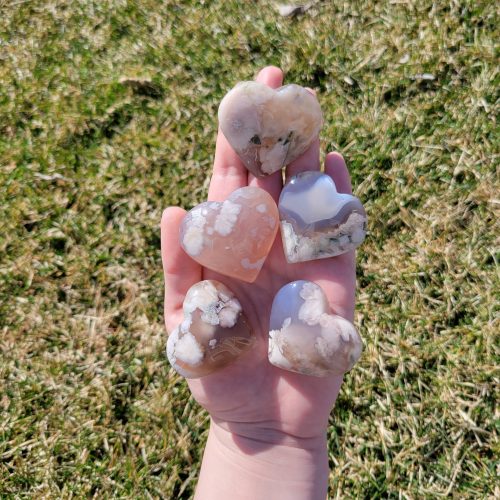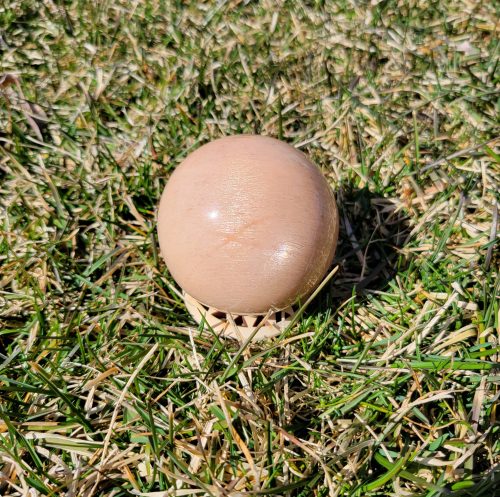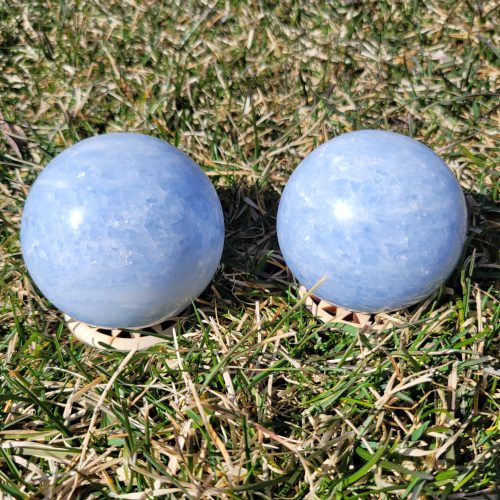-
4.5cm Wide Howlite was originally discovered in Canada by a geologist named Henry How which is where its name comes from. Howlite is formed in evaporate deposits with other borate and evaporate minerals. The outside of the mineral is not pleasant to the eye and is said to look like a head of cauliflower. However, when that is taken off, this beautiful mineral is found inside! This mineral is mainly found in Canada and the USA. ***Due to natural variations in stones, the appearance will vary***
-
5cm Wide Howlite was originally discovered in Canada by a geologist named Henry How which is where its name comes from. Howlite is formed in evaporate deposits with other borate and evaporate minerals. The outside of the mineral is not pleasant to the eye and is said to look like a head of cauliflower. However, when that is taken off, this beautiful mineral is found inside! This mineral is mainly found in Canada and the USA. ***Due to natural variations in stones, the appearance will vary***
-
4.5cm Wide Sunstone is a plagioclase feldspar. The glitter-like sheen in this stone comes from inclusions that are most commonly hematite but can also be goethite, pyrite, or copper (rare). This beautiful stone is formed in molten lava and can be found in many places around the world such as Australia, Canada, China, Congo, India, Mexico, Norway, Russia, Sri Lanka, Tanzania, the U.S. ***Due to natural variations in stones, appearance will vary***
-
5.5cm Wide Sunstone is a plagioclase feldspar. The glitter-like sheen in this stone comes from inclusions that are most commonly hematite but can also be goethite, pyrite, or copper (rare). This beautiful stone is formed in molten lava and can be found in many places around the world such as Australia, Canada, China, Congo, India, Mexico, Norway, Russia, Sri Lanka, Tanzania, the U.S. ***Due to natural variations in stones, appearance will vary***
-
4cm - 5cm Tall Cactus quartz is a rare specimen can only be found in the Magaliesberg Mountains in South Africa. Its color can range from a yellow hue (as pictured) to a purple hue. Cactus quartz is formed when a second generation of quartz points form on top of the original crystal points. ***Due to natural variations in stones, the appearance will vary***
-
4cm Wide Fluorite is composed of fluorine and calcium and is formed in hydrothermal veins in the Earth's crust. This mineral can be found in all colors of the rainbow with different hues. The different colors in Fluorite are caused by impurities within the mineral. The deeper colors are found in well-formed crystals. Fluorite was originally discovered in Illinois in 1842 but is no longer mined in the US. It can be found in China, South Africa, Mongolia, France, and Russia. ***Due to natural variations in stones, the appearance will vary***
-
5cm Wide Fluorite is composed of fluorine and calcium and is formed in hydrothermal veins in the Earth's crust. This mineral can be found in all colors of the rainbow with different hues. The different colors in Fluorite are caused by impurities within the mineral. The deeper colors are found in well-formed crystals. Fluorite was originally discovered in Illinois in 1842 but is no longer mined in the US. It can be found in China, South Africa, Mongolia, France, and Russia. ***Due to natural variations in stones, the appearance will vary***
-
10.5cm Long Fluorite is composed of fluorine and calcium and is formed in hydrothermal veins in the Earth's crust. This mineral can be found in all colors of the rainbow with different hues. The different colors in Fluorite are caused by impurities within the mineral. The deeper colors are found in well-formed crystals. Fluorite was originally discovered in Illinois in 1842 but is no longer mined in the US. It can be found in China, South Africa, Mongolia, France, and Russia. ***Due to natural variations in stones, the appearance will vary***
-
20mm Agate is a translucent form of microcrystalline quartz. These crystals form inside of igneous rocks over a long period of time and get their banding from years of siliceous groundwater building up in the cavities of these rocks. What makes this mineral so beautiful and unique is that the color variations and banding patterns are completely dependent on the environmental factors around them. Agate can be found here in the USA; mostly in the northwest. ***Due to natural variations in stones, the appearance will vary***
-
5.5cm Wide Flower agate gets its name from the flower-like formations within the crystal's body. These crystals are volcanic rocks that are mainly composed of chalcedony and quartz. These crystals can vary in color; from pink to a dark grey/purple. Recently discovered in Madagascar, these crystals are believed to go back to 2000 BC. ***Due to natural variations in stones, the appearance will vary***
-
60mm Moonstone is a potassium aluminum silicate feldspar. The peach variety ranges from a tan brown to a very light peach/pink. This range in color is caused by higher contents of aluminum within the feldspar’s chemical make-up. Most of Peach Moonstone comes from Madagascar, with a majority of the material being crafted by the local craftsmen/women. ***Due to natural variations in stones, appearance will vary***
-
65mm Calcite is a rock-forming mineral that is found throughout the world in sedimentary, metamorphic, and igneous rocks. The blue color comes from the calcium carbonate inclusions within this mineral. Blue calcite can be found in many places around the world but mostly in Mexico, The United States, Britain, and Iceland. ***Due to natural variations in stones, appearance will vary***

